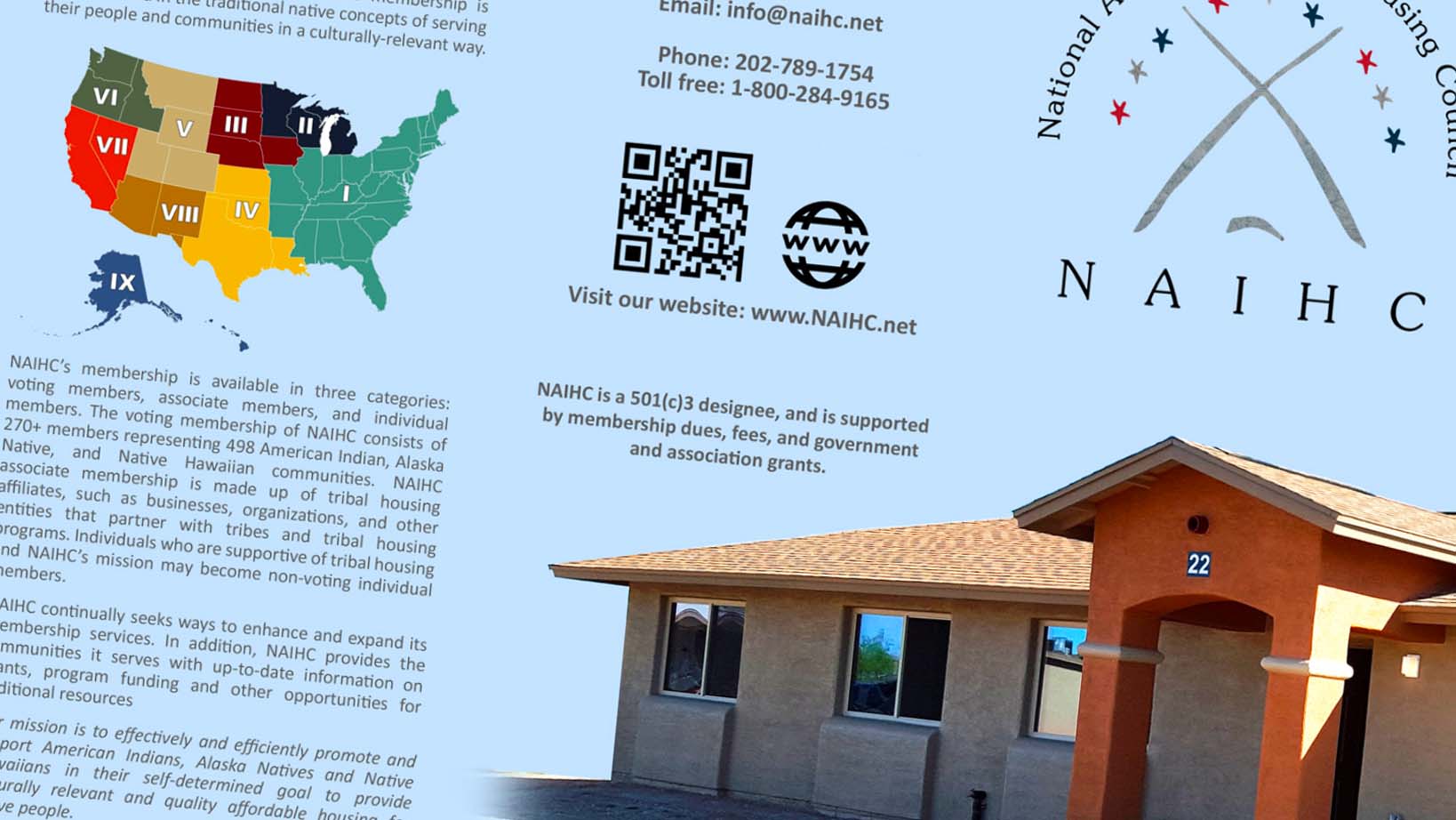National American Indian Housing Council
About
NAIHC services to its members and the general public include

Advocacy
Advocacy for housing opportunities and increased funding for Native American housing and community development programs.

Training
Training in many areas of Native housing management.

Membership
On-site technical assistance for Native housing professionals

Events
Research and information services related to Native housing issues and programs.
Our Priority to Tribes
The National American Indian Housing Council (NAIHC) is a 501(C)(3) non-profit organization founded in 1974 to support Tribal housing entities in their efforts to provide safe, decent, affordable, and culturally appropriate housing for Native communities. NAIHC provides Tribes and Tribally Designated Housing Entities (TDHEs) with training and technical assistance in developing and operating Tribal housing programs. We provide an array of communication for topics such as advocacy efforts to influence policy development and legislation impacting housing development in Indian Country. We are also a member organization comprised of over 300 members who represent about 475 tribes and tribal housing organizations.
Overview of Tribal Housing Concerns on Indian Country
There are 567 federally-recognized Indian tribes in the United States. Despite progress over the last few decades, many tribal communities continue to suffer from some of the highest unemployment and poverty rates in the United States. Historically, Native Americans in the United States have experienced higher rates of substandard housing and overcrowded homes than other demographics. The U.S. Census Bureau reported in the 2015 American Community Survey that American Indians and Alaska Natives were almost twice as likely to live in poverty as the rest of the population—26.6 percent compared with 14.7 percent. The median income for an American Indian Alaska Native household is 31% less than the national average ($38,530 versus $55,775)
In addition, overcrowding, substandard housing, and homelessness are far more common in Native American communities. In January of this year, the Department of Housing and Urban Development (HUD) published an updated housing needs assessment. According to the assessment, 5.6 percent of homes on Native American lands lacked complete plumbing and 6.6 percent lacked complete kitchens. These are nearly four times than the national average, which saw rates of 1.3 percent and 1.7 percent, respectively. The assessment found that 12 percent of tribal homes lacked sufficient heating. The assessment also highlighted the issue of overcrowded homes in Indian Country, finding that 15.9 percent of tribal homes were overcrowded, compared to only 2.2 percent of homes nationally. The assessment concluded that to alleviate the substandard and overcrowded homes in Indian Country, 68,000 new units need to be built.
Since NAHASDA was enacted, tribes have built over 37,000 new units according to HUD. However, as the IHBG appropriations have remained level for a number of years, inflation has diminished the purchasing power of those dollars, and new unit construction has diminished as tribes focus their efforts on unit rehabilitation. While averaging over 2,400 new unit construction between FY2007 and 2010, new unit construction has dropped in recent years with only 2,000 new units between 2011 and 2014, and HUD estimating less than 1,000 new units in future years as tribes maintain existing housing stock.

